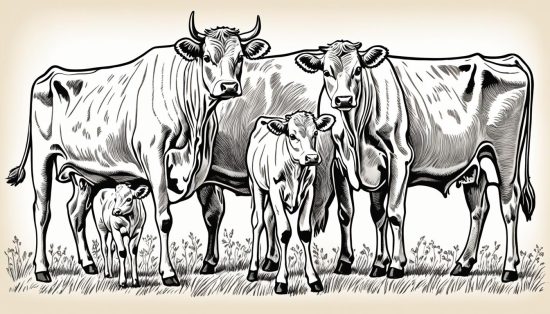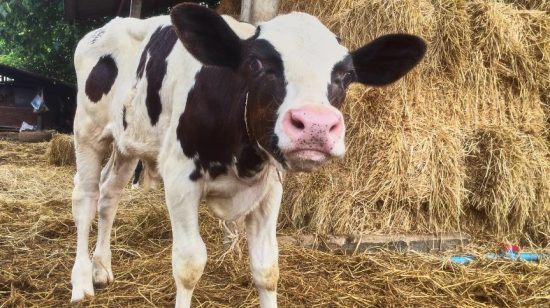What Is Mad Cow Disease? Understanding This Fatal Disease
Explore the realities of mad cow disease, its effects on health, and prevention tips. Get informed about this serious condition.
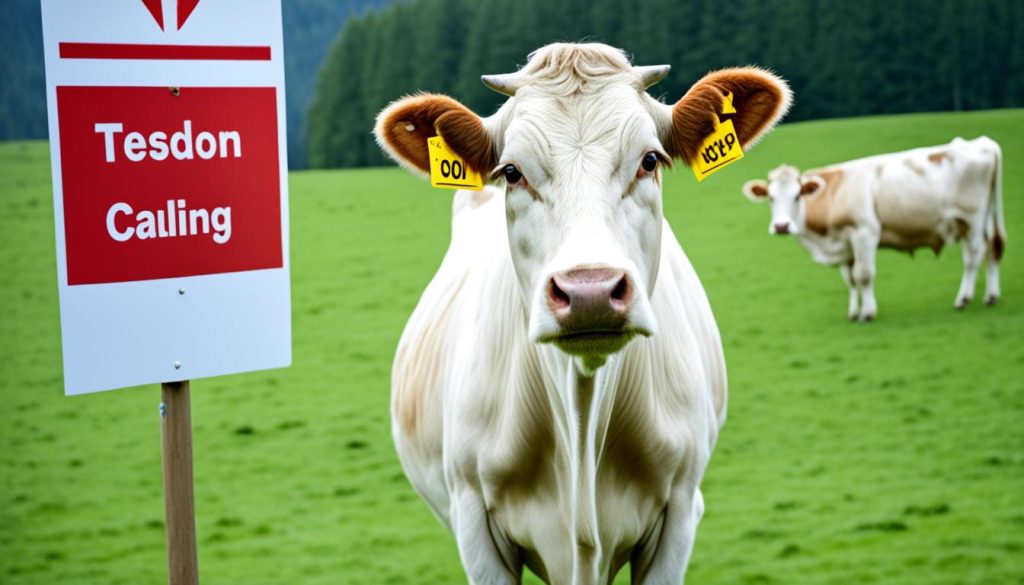
Have you ever wondered what mad cow disease really is? How does it affect cattle? And more importantly, how does it impact humans? This shadowy disease, also known as bovine spongiform encephalopathy (BSE), has captivated scientists and sparked concerns worldwide. But do we fully comprehend the origins and transmission of this fatal disease?
In order to shed light on the mystery of mad cow disease, it is crucial to delve into the intricacies of its emergence and spread. From the first reported cases in the UK to its global reach, understanding the timeline is key. Moreover, recognizing the symptoms of mad cow disease in cattle could be a game-changer in our battle against this deadly ailment. But can we truly identify these symptoms in their early stages, or do they only become apparent when it’s too late?
Furthermore, we cannot overlook the impact of mad cow disease on humans. The human form of BSE, variant Creutzfeldt-Jakob disease (vCJD), presents its own set of challenges and risks. What distinguishes vCJD from the more common classical Creutzfeldt-Jakob disease? And how does it transmit to humans? Curious to know how we can prevent the spread of mad cow disease and protect both animals and humans? Join us as we explore the measures, safety regulations, and common concerns surrounding this dire disease. It’s time to equip ourselves with knowledge to tackle the enigma that is mad cow disease.
Exploring the Origins and Spread of Bovine Spongiform Encephalopathy
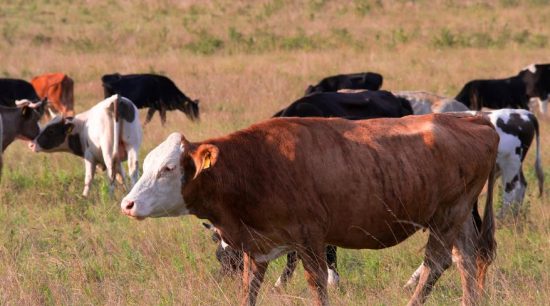
Mad cow disease, scientifically known as bovine spongiform encephalopathy (BSE), first emerged in the United Kingdom (UK) during the 1970s. The initial reported cases of this devastating disease occurred in 1986 and sparked concerns about its origins and transmission.
The origins of mad cow disease can be traced back to the consumption of meat-and-bone meal contaminated with the BSE prion. This abnormal version of a protein, which damages the nervous system tissue in the brain and spinal cord, led to the emergence and rapid spread of the disease within the UK’s cattle population. The outbreak in the UK primarily affected young calves, who consumed prion-infected meat-and-bone meal as part of their feed.
Transmission of BSE Through Cattle Feed
The transmission of mad cow disease occurs through the food supply chain. Cattle become infected with BSE by consuming feed that is contaminated with the abnormal prion. This contamination can happen when feed manufacturers inadvertently use the remains of BSE-infected animals in their formulations. The practice of using meat-and-bone meal derived from infected animals as a protein source in cattle feed played a significant role in the spread of BSE.
Global Incidence: Cases in the US, Canada, and Beyond
Although the outbreak of mad cow disease was most prevalent in the UK, its impact extended beyond its borders. The disease quickly spread to other countries through the international trade of contaminated animal feed and live cattle. The global incidence of BSE led to cases being reported in the United States, Canada, and various other nations across the world.
To gain a better understanding of the global distribution of BSE cases, the following table provides an overview of reported incidences in the US and Canada:
| Country | Number of BSE Cases |
|---|---|
| United States | 3 |
| Canada | 19 |
Recognizing the Symptoms of Mad Cow Disease in Cattle
Cattle infected with mad cow disease may exhibit various symptoms. These signs are important to recognize in order to take appropriate measures and prevent the further spread of the disease. Some of the common symptoms include:
- Difficulty walking or standing
- Nervousness and agitation
- Aggressive behavior
It is important to note that these symptoms may not become apparent until 4-6 years after the initial infection. This long incubation period makes early detection and prevention challenging. Currently, there is no test available for BSE in live cattle. Diagnosis is typically made based on observed symptoms in the later stages of the disease.
Once symptoms become apparent, affected cows usually experience rapid decline and die within weeks or months. This underscores the urgency of identifying signs of mad cow disease and implementing control measures in a timely manner.
What Is Mad Cow Disease and Its Impact on Humans
Mad cow disease, also known as bovine spongiform encephalopathy (BSE), is a deadly disease that can have severe consequences for humans when they consume meat from infected cattle. The human form of BSE is called variant Creutzfeldt-Jakob disease (vCJD), which is characterized by its devastating impact on the neurological system.
Variant Creutzfeldt-Jakob disease (vCJD) is a rare and fatal neurodegenerative disease that affects humans who have been exposed to the BSE prion through contaminated beef products. Unlike the classic form of Creutzfeldt-Jakob disease (CJD), vCJD is primarily linked to the consumption of prion-infected meat from cattle affected by mad cow disease.
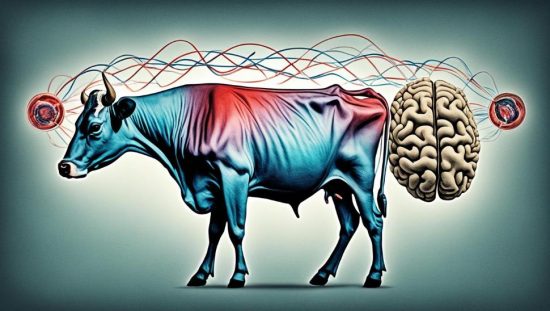
The transmission of vCJD to humans occurs when individuals consume central nervous system tissues, such as the brain and spinal cord, from cattle infected with mad cow disease. These contaminated tissues contain the BSE prion, which can cause the abnormal folding of normal prion proteins in the human brain, leading to the development of vCJD.
Comparing vCJD with Classical Creutzfeldt-Jakob Disease
While both vCJD and classical CJD are prion diseases that affect the neurological system, there are significant differences between the two. vCJD is directly linked to the consumption of prion-infected meat from cattle, whereas classical CJD can occur sporadically, genetically, or through medical procedures. Additionally, the symptoms and pathology of vCJD differ from classical CJD, making it crucial to distinguish between the two for accurate diagnosis and treatment.
| Variant Creutzfeldt-Jakob Disease (vCJD) | Classical Creutzfeldt-Jakob Disease (CJD) | |
|---|---|---|
| Symptoms | Depression, anxiety, loss of coordination, memory loss, dementia | Rapidly progressive dementia, muscle stiffness, twitching, cognitive decline |
| Transmission | Consuming prion-infected beef products | Spontaneous, genetic, or through medical procedures |
| Prevalence | Rare | More common |
| Life Expectancy | Around 13 months after symptom onset | Varies, typically less than a year |
Preventative Measures and Safety Regulations
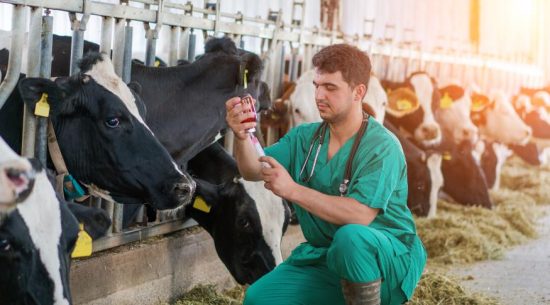
To prevent mad cow disease and the transmission of BSE, various preventative measures and safety regulations have been implemented. These measures aim to control and curb the spread of the disease, ensuring the safety of both animals and humans.
One crucial measure is testing cattle for BSE. By regularly conducting tests, farmers and regulatory agencies can identify infected animals and take appropriate actions to prevent further spread. Culling infected animals is another important step in controlling the disease. Removing infected cattle from the population helps contain the prion and minimize the risk of transmission.
In addition, strict safety regulations are in place to prevent the use of high-risk materials in animal and human food products. High-risk materials such as the brain, skull, eyes, spinal cord, and certain intestinal tissues are prohibited from being used in human food, dietary supplements, and cosmetics. These regulations help minimize the risk of exposure to prion-infected tissues.
Feed regulations are also implemented to safeguard cattle from contaminated feed. Countries have established rules and guidelines to ensure that animal feed does not contain any prion-infected material, reducing the risk of transmission through the food chain. By controlling the source of feed, authorities can effectively minimize the likelihood of cattle being exposed to the disease. Governments, regulatory agencies, and farmers must remain diligent in enforcing and improving these preventative measures and safety regulations. Continuous monitoring, testing, and compliance with safety protocols are vital to effectively control and prevent the spread of mad cow disease. By proactively addressing the risks and implementing the necessary measures, we can reduce the prevalence of BSE and safeguard animal and public health.
Addressing the Common Concerns About BSE and vCJD
As public awareness of mad cow disease, or bovine spongiform encephalopathy (BSE), increases, it is natural to have questions and concerns about its implications for your health. Let’s address some of the common inquiries and provide accurate information to alleviate any worries you may have.
One common concern is the safety of consuming beef. It’s important to note that stringent safety measures are in place to prevent infected meat from entering the food supply. Cattle tested for BSE, and infected animals are not allowed for human consumption. Therefore, the risk of contracting BSE through beef is extremely low. There have also been concerns about the transmission of BSE through milk. However, it’s crucial to understand that prions, the abnormal proteins responsible for BSE, are not typically present in milk. The transmission of BSE primarily occurs through ingestion of prion-infected nervous system tissues, such as the brain and spinal cord.
When it comes to cooking, you may wonder if it eliminates prions from meat. While cooking can reduce the risk of bacterial contamination, it may not completely eliminate prions. Therefore, it is best to follow recommended cooking guidelines and precautions to minimize any potential risk. Furthermore, you may be curious about the presence of mad cow disease in other animals. While BSE is primarily found in cattle, there have been rare cases reported in other species, such as mink and domestic cats. However, the prevalence of BSE in these animals is extremely low compared to cattle.
Lastly, if you are concerned about the risk of acquiring variant Creutzfeldt-Jakob disease (vCJD) while traveling abroad, it’s important to note that the cases of vCJD outside of the United Kingdom, where the disease originated, are very rare. countries have implemented rigorous testing and control measures to prevent the spread of vCJD.
FAQs on what is mad cow disease
How does a person get mad cow disease?
Humans can contract mad cow disease by consuming beef products contaminated with central nervous system tissues, such as the brain and spinal cord, from infected cattle. The human form of mad cow disease is called variant Creutzfeldt-Jakob disease (vCJD).
Has anyone ever survived mad cow disease?
There is no known cure for mad cow disease or variant Creutzfeldt-Jakob disease (vCJD). Once symptoms appear, affected individuals usually die within months. Survival is extremely rare.
How to avoid mad cow disease?
To avoid mad cow disease, it is important to follow safety regulations and measures. These include testing cattle for BSE, culling infected animals, and banning the use of high-risk materials in animal and human food products. Additionally, countries have implemented feed regulations to ensure that cattle are not exposed to contaminated feed.
What is the life expectancy of a person with mad cow disease?
Variant Creutzfeldt-Jakob disease (vCJD) is usually fatal, with a life expectancy of around 13 months after the onset of symptoms.
Can mad cow disease be cured?
Currently, there is no known cure for mad cow disease or variant Creutzfeldt-Jakob disease (vCJD).
Does mad cow disease still exist?
While the prevalence of mad cow disease has significantly decreased over the years, it still exists as a serious concern. Effective preventative measures and safety regulations have been implemented to control and prevent the spread of the disease.

